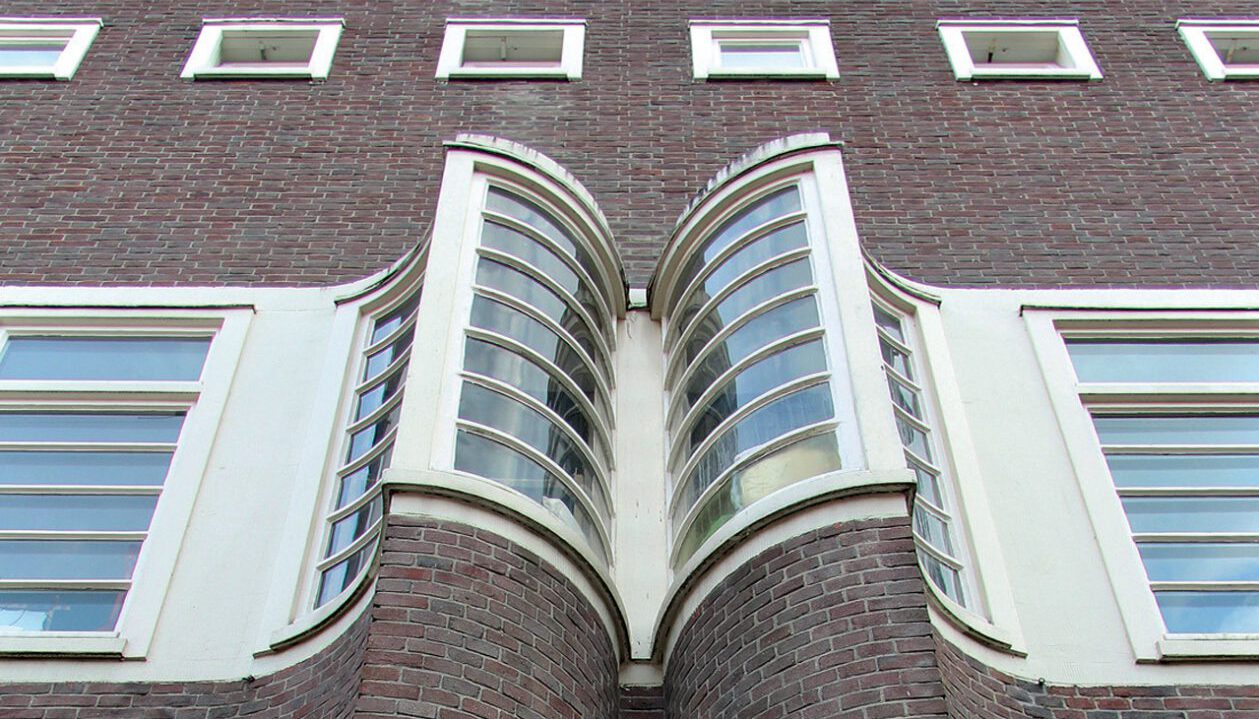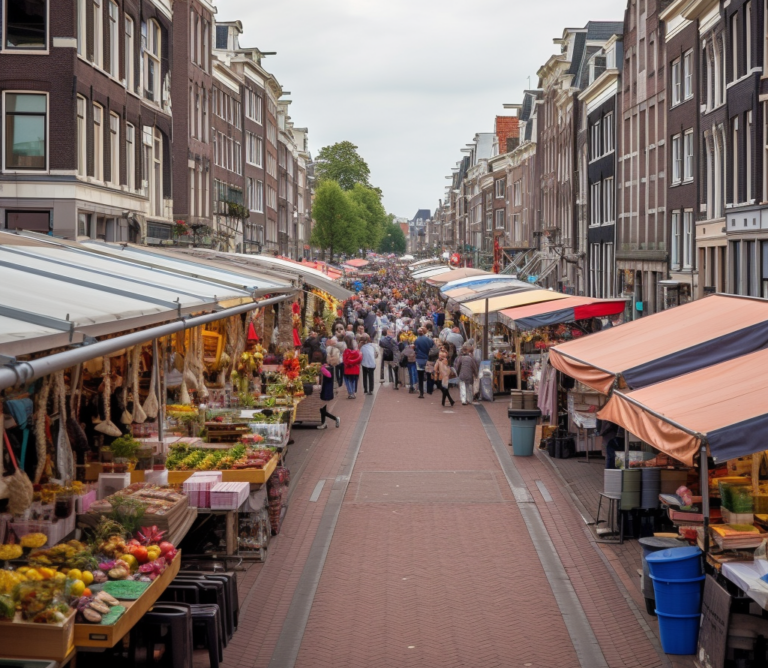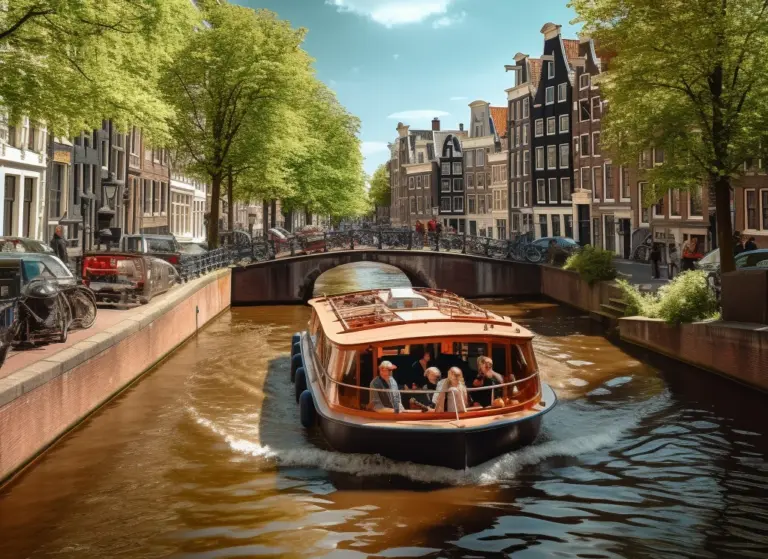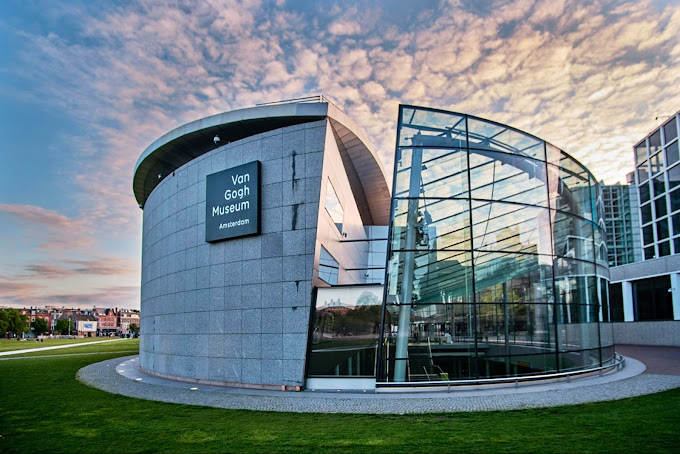Architecture
Architecture of Amsterdam Amsterdam School and Iconic Landmarks
Amsterdam School
In the early 20th century, Amsterdam witnessed the birth of a new movement in architecture that would come to redefine its urban landscape and artistic identity. The “Amsterdam School,” emerged as a response to the dominant architectural trends of the time. With its expressive brickwork, intricate detailing, and organic forms, this movement celebrated a unique blend of tradition and innovation that left an indelible mark on the city’s architectural legacy.
Origins and Characteristics
The Amsterdam School, which roughly spanned from 1910 to 1930, was a departure from the prevailing rationalism and functionalism of the era. It was a direct response to the industrialization that swept Europe and sought to infuse architecture with a sense of human touch, individuality, and a connection to nature. This movement aimed to create buildings that were not just functional structures but also works of art that resonated with emotions and human experiences.
Characterized by its ornate brickwork, undulating lines, asymmetrical facades, and whimsical decorative elements, the Amsterdam School sought to capture the essence of life and movement in its designs. These designs often drew inspiration from nature, resulting in structures that appeared to grow organically from the earth. Architectural details, such as curved window frames and intricate masonry, were meticulously crafted to evoke a sense of craftsmanship and uniqueness.
Architects and Landmarks
The Amsterdam School movement was championed by a group of visionary architects who shared a common goal: to break away from the constraints of established architectural norms. Michel de Klerk, Johan van der Mey, Piet Kramer, and others played pivotal roles in shaping the movement’s aesthetics and philosophy.
Among the iconic landmarks that showcase the Amsterdam School’s influence is the Scheepvaarthuis (Shipping House). This architectural gem, designed by Johan van der Mey, is a testament to the movement’s commitment to merging artistic expression with functional design. The Scheepvaarthuis’s grand facade features intricate brickwork, sculptural reliefs, and a sense of dynamic movement that encapsulates the Amsterdam School’s spirit.
Another notable example is the Het Schip (The Ship) in the Spaarndammerbuurt neighborhood, designed by Michel de Klerk. This social housing complex is a testament to the movement’s commitment to community and functional art. The building’s distinctive form, with its undulating lines and playful ornamentation, reflects the movement’s values while addressing the practical needs of its residents.
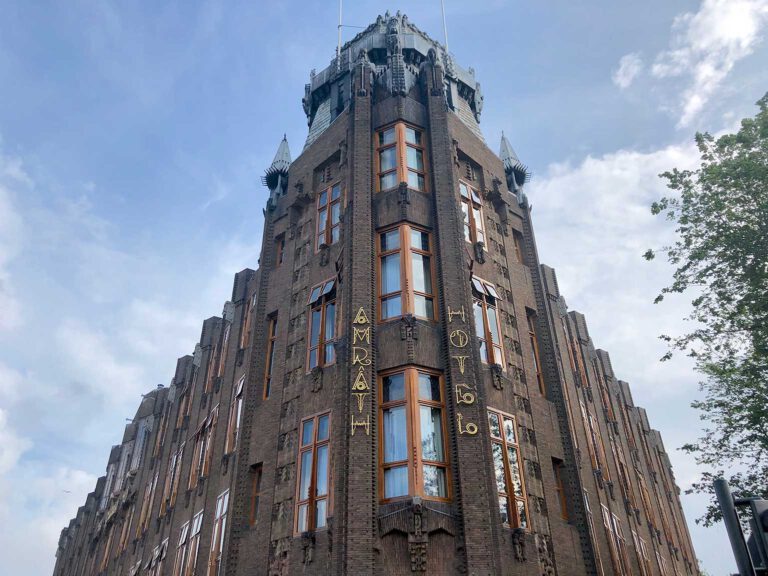
Enduring Influence
While the Amsterdam School movement was relatively short-lived, its impact on the city of Amsterdam and the world of architecture is profound and enduring. The movement’s influence can still be observed in various parts of the city, as well as in the work of architects who draw inspiration from its principles.
Today, the Amsterdam School continues to capture the imagination of architects, artists, and enthusiasts alike. Its emphasis on craftsmanship, connection to nature, and celebration of the human spirit resonates in a world increasingly drawn to sustainable design, individuality, and a sense of place.
Preserving the Legacy
Amsterdam’s commitment to preserving its architectural heritage has ensured that many Amsterdam School buildings remain standing and cherished. Museums, exhibitions, and guided tours offer visitors a chance to explore the movement’s history, philosophy, and impact. The Het Schip Museum, situated within the iconic Het Schip building, and the Scheepvaarthuis itself offer immersive journeys into the Amsterdam School’s world, showcasing its architectural brilliance and societal impact.
In a city known for its diverse architectural treasures, the Amsterdam School stands as a testament to the power of artistic expression and the enduring resonance of a movement that dared to defy convention. Its distinctive character, woven into Amsterdam’s urban fabric, serves as a reminder of the profound ways in which architecture can reflect and shape society’s values, emotions, and aspirations.
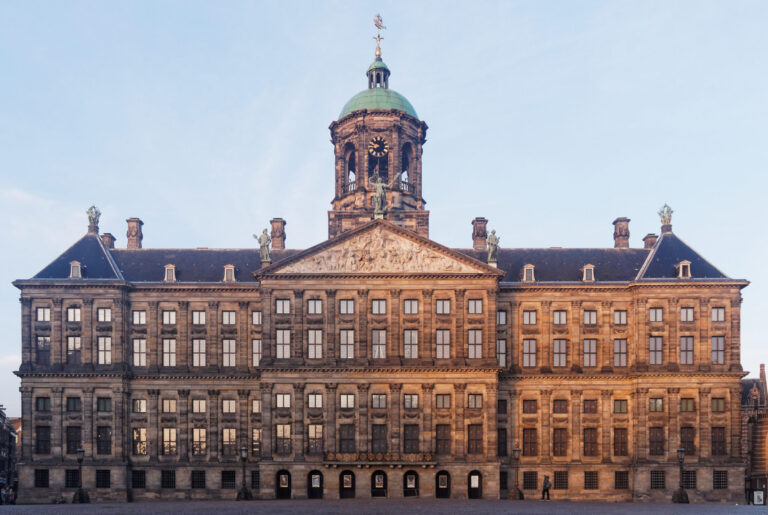
The Iconic Architecture of Amsterdam
Renaissance and Revival: The Royal Palace and Beyond
At the heart of Dam Square stands the Royal Palace, a magnificent building that exudes regal elegance and harks back to Amsterdam’s royal past. Originally constructed as a city hall during the Dutch Golden Age, the Royal Palace now serves as a symbol of the city’s civic pride and enduring history. Its neoclassical façade and opulent interior capture the grandeur of a bygone era while remaining a vibrant hub of cultural events and ceremonies.
Adjacent to the Royal Palace is the Nieuwe Kerk (New Church), a stunning example of late Gothic architecture. Its imposing tower and intricate detailing showcase the mastery of craftsmanship that defined its construction. The Nieuwe Kerk’s role as a venue for exhibitions and royal ceremonies ensures that its historical and cultural importance persists to this day.
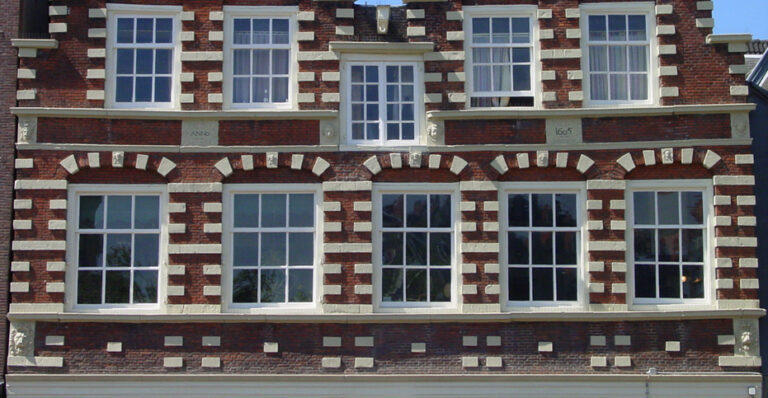
Classic and modern architecture in the city
As one meanders through the meandering waterways of Amsterdam’s center, the iconic canal houses emerge as the embodiment of the city’s historical legacy. These elegant structures, characterized by their narrow facades, ornate gables, and steep staircases, were built during the Dutch Golden Age of the 17th century. Reflecting the prosperity and cosmopolitan nature of Amsterdam during that era, the canal houses are a testament to the city’s economic prowess and artistic sensibilities.
Herengracht, Keizersgracht, and Prinsengracht, the city’s main canals, are lined with these architectural gems. Each canal house tells a story, with subtle variations in design denoting the social status and wealth of their original inhabitants. The Anne Frank House, nestled among these canal houses, adds a poignant layer of historical significance to the area, reminding visitors of Amsterdam’s wartime history.
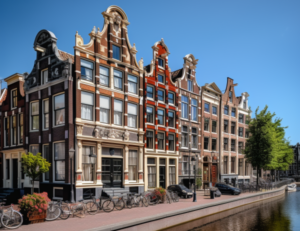
Modernism and Innovation – From the Stedelijk Museum to EYE Film Institute
Amsterdam’s architectural journey extends beyond the past, embracing modernism and innovation with open arms. The Stedelijk Museum, situated at Museumplein, stands as a testament to the city’s commitment to contemporary art and design. Its sleek, white façade is juxtaposed with bold angles and windows, offering a glimpse into the artistic and architectural experimentation that defines the modern era.
Further exemplifying Amsterdam’s modern architectural prowess is the EYE Film Institute, a futuristic structure that resembles a ship anchored on the IJ River’s banks. Designed to reflect the dynamic nature of cinema, this building serves as a testament to the city’s forward-thinking attitude.
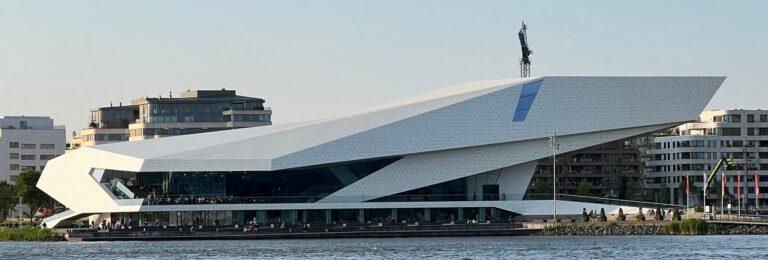
A Tapestry of Timelessness
The architectural tapestry woven into the center of Amsterdam is a harmonious blend of historical preservation and modern innovation. As visitors stroll along the cobbled streets, traverse the canal bridges, and immerse themselves in the city’s cultural offerings, they embark on a journey through time. The center of Amsterdam serves as a living gallery, showcasing the enduring beauty of Dutch architecture across centuries.
From the iconic canal houses that whisper tales of the past to the contemporary structures that push the boundaries of design, the architecture in the center of Amsterdam captivates and inspires. It’s a reminder that in this city of juxtapositions, where old and new coexist seamlessly, the power of architecture is not just in its physical form, but in its ability to evoke emotions, tell stories, and connect generations.
